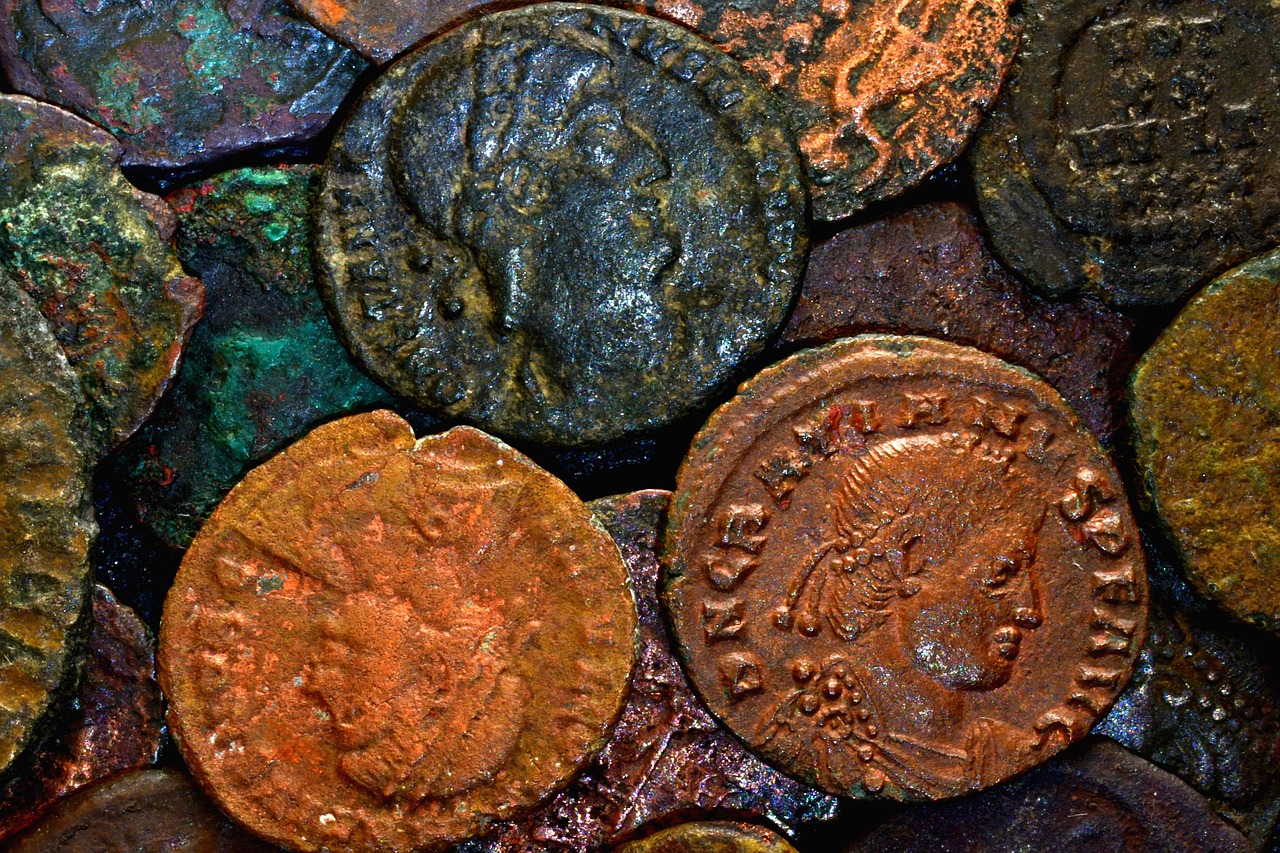The Roman coin was more than just a means of exchange – it was a miniature masterpiece of storytelling, designed to broadcast ambitions and ideals across the empire. Each etched god, goddess and allegorical figure were deeply sumbolic, embodyng Rome’s victories, virtues and vision of itself. From Venus, the mother of Rome’s mythical founder, to Jupiter, the divine enforcers of authority, these images offered currency and cosmic endorsement.

In just a coin, the Greek myth of Aeneas is forever linked with the Julio-Claudian family’s divine right to rule.
The Divine Ancestor
Venus, the goddess of love and beauty, held a special place on Roman coins, particularly during the time of Julius Caesar. Claiming descent from Venus through Aeneas, the Trojan hero, Caesar linked his lineage to divine origins and underscored his connection to Rome’s mythic past. This association was further solidified by his adopted heir, Octavian—later known as Augustus, the first emperor of Rome.
By promoting Venus as the divine ancestress of his family, Augustus not only legitimized his rule but also strengthened ties between Roman culture and the Homeric traditions of their Greek neighbors. This reinforced Rome’s ongoing adoption and adaptation of Greek culture, intertwining the two civilizations in art, religion, and mythology.
The King of Gods
Jupiter, the supreme symbol of authority and protector of Rome, was a frequent presence on Roman coins, particularly during times of war or political upheaval. His image reinforced the emperor’s role as a ruler chosen and supported by the gods.
After the chaos of the Year of the Four Emperors (69 CE), Vespasian minted coins featuring Jupiter to emphasize divine support for his reign. These coins highlighted Jupiter’s role in legitimizing Vespasian’s authority and restoring stability to the empire.
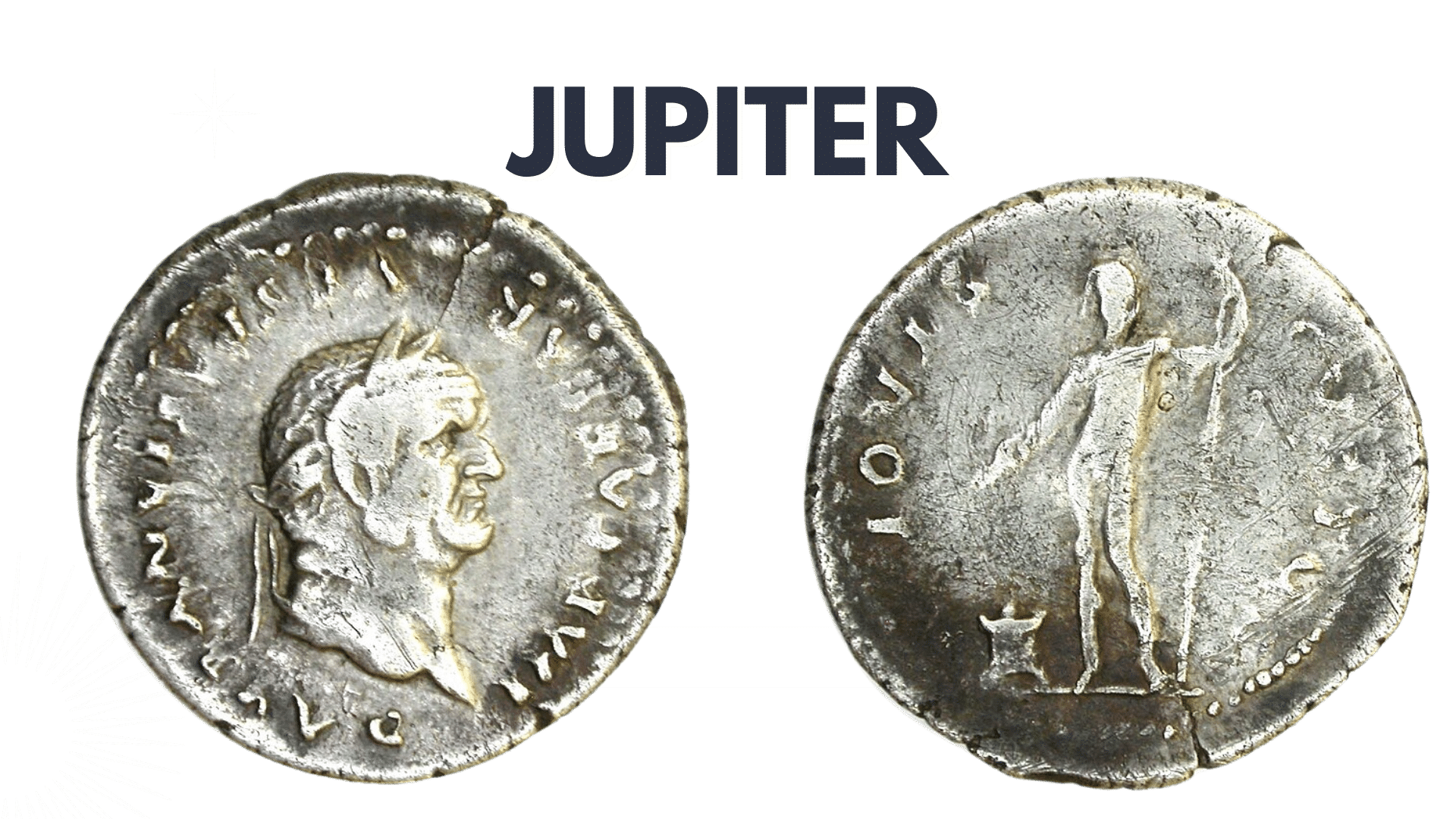
Jupiter is holding a thunderbolt and scepter, underscoring his power to grant or withhold victory.
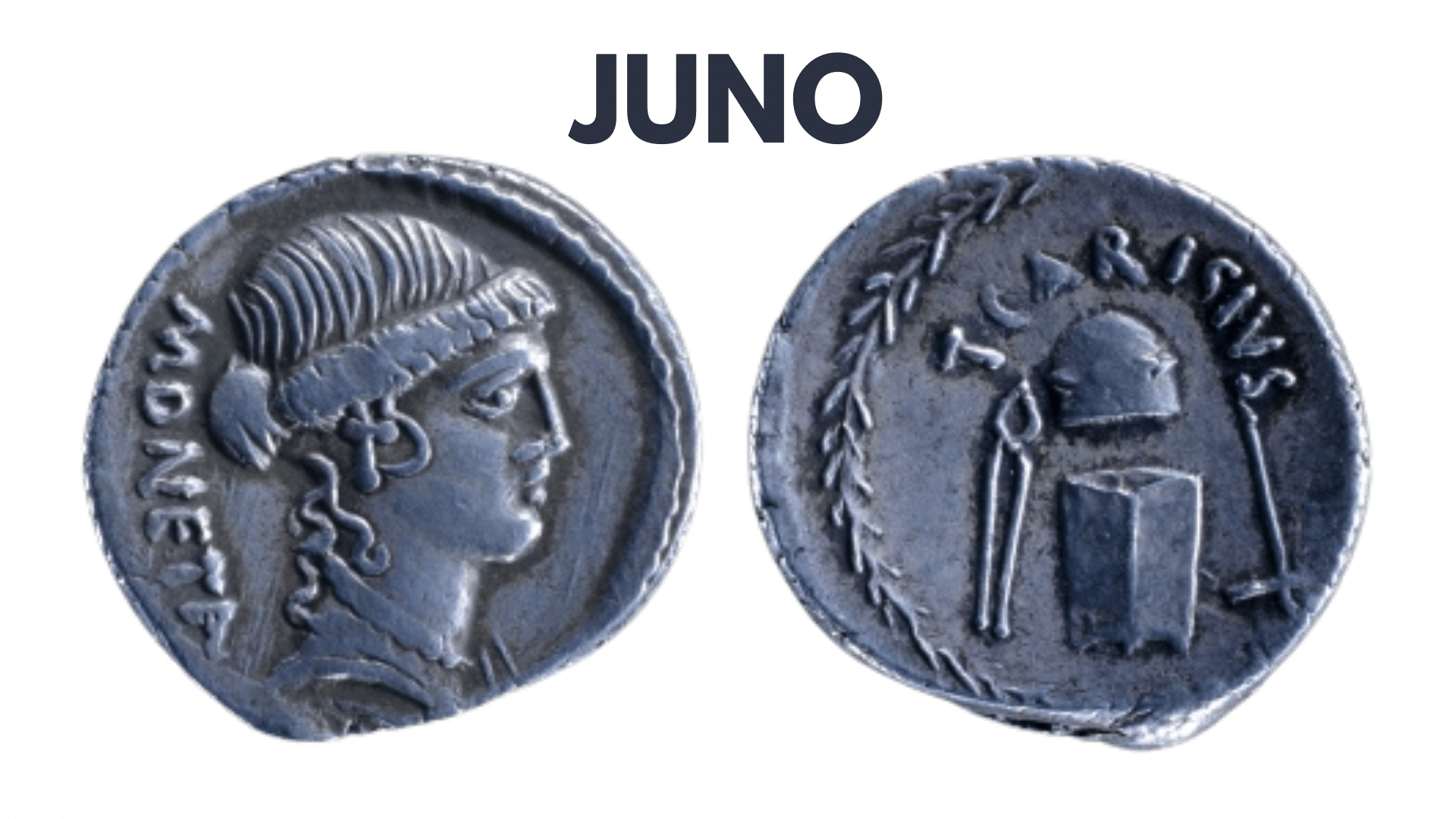
Juno Moneta, associated with the mint itself, reinforcing her as a guardian of Rome’s financial stability.
Protector of Rome
Juno, the queen of the gods, symbolized marriage, fertility, and the protection of the state. Coins bearing her image often conveyed messages of stability and unity, which were crucial during times of political unrest. According to Livy, in 345 BCE, the Roman dictator Lucius Furius Camillus called upon the gods for assistance in securing victory over the Italic Aurunci tribes of Southern Italy. In gratitude, he vowed to build a temple to Juno Moneta. A year after his triumph, Camillus fulfilled his vow, dedicating a temple to the goddess near the Capitoline Hill.
Juno Moneta was regarded as the protectress of the city’s funds, and money was coined in her temple for over four centuries, before the mint was relocated to a new site near the Colosseum during the reign of Emperor Domitian.
God of the Arts and Prophecy
Apollo’s image on Roman coins often symbolized cultural achievements, divine wisdom, and the ideal of harmonious rule. During Augustus’ reign, the god played a central role in his self-presentation as the restorer of peace and culture. Augustus strengthened this association by dedicating a temple to Apollo next to his residence on the Palatine Hill.
Later, Augustus would claim that Apollo had been instrumental in securing his victory over Cleopatra and Marc Antony at the Battle of Actium, further cementing the divine favor that he believed guided his success.
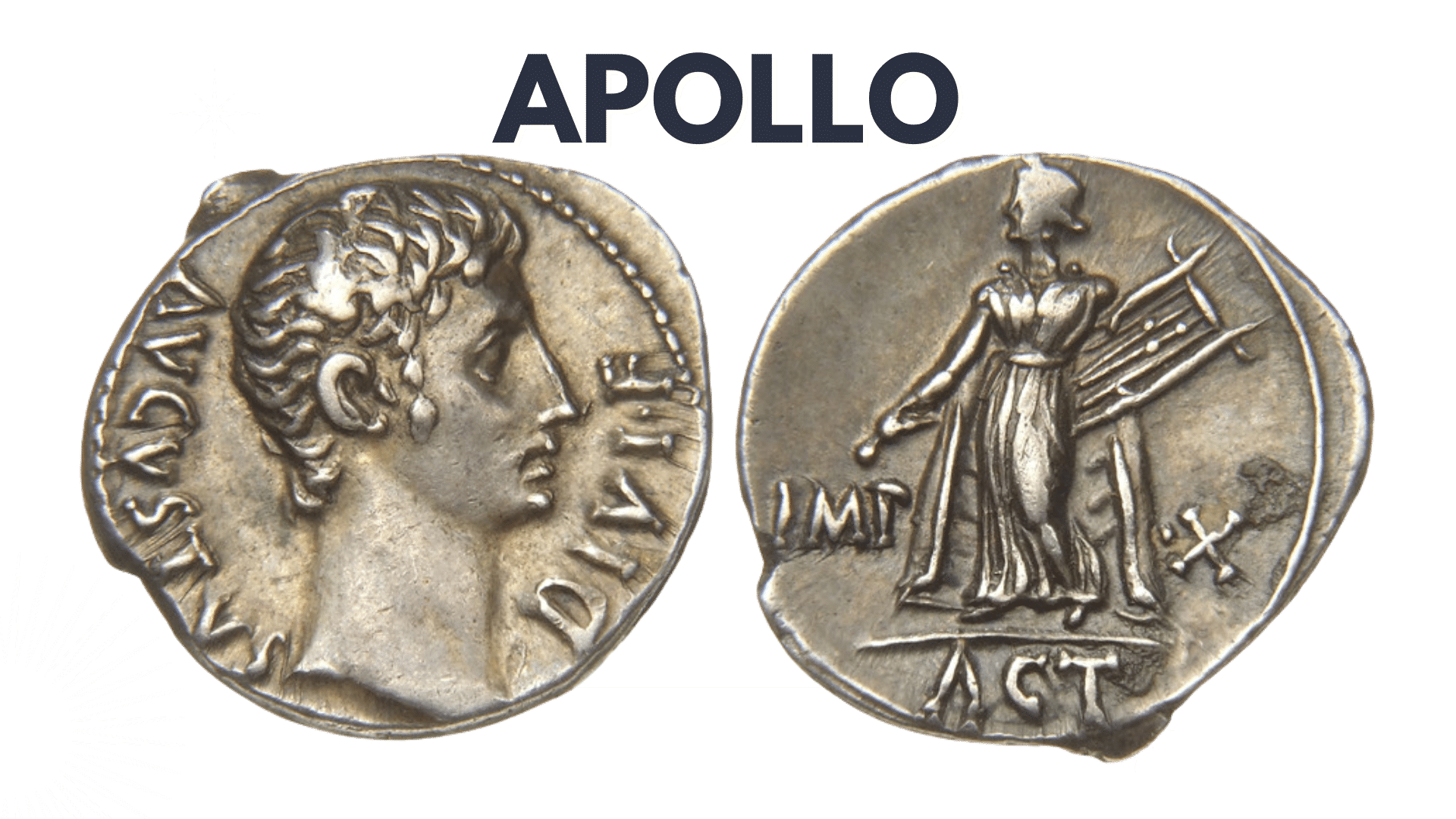
Coins with Apollo’s lyre or laurel wreath, representing harmony and triumph.
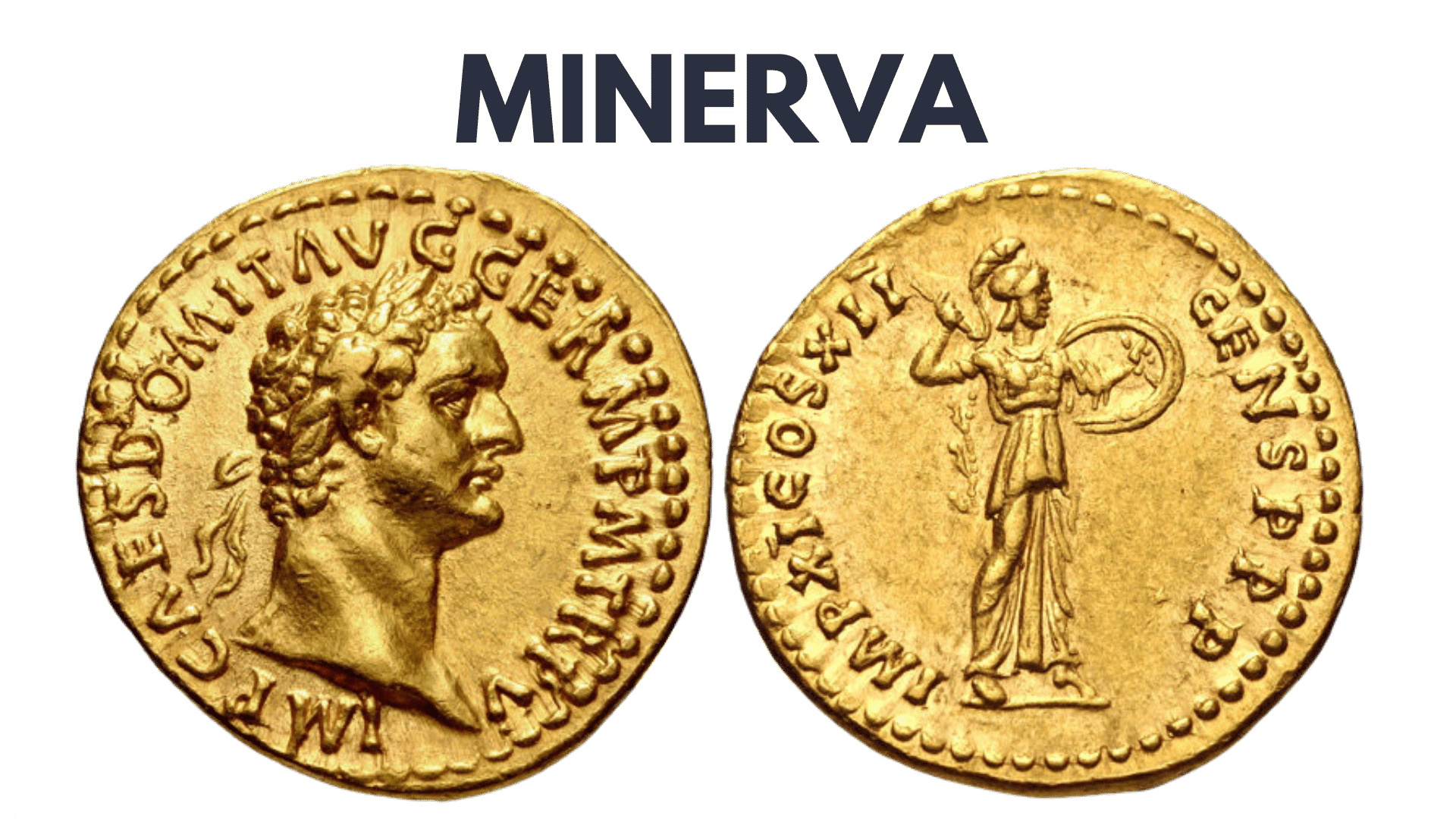
Minerva advancing, hurling a spear and carrying a shield, with an owl at her side (her sacred animal).
Goddess of Wisdom and Strategy
Minerva, Rome’s counterpart to the Greek goddess Athena, symbolized strategic warfare, wisdom, and intellect. Coins featuring her reminded Romans of their military strength and disciplined minds. Domitian, more than any other Roman emperor, frequently included Minerva on his coinage.
Historical accounts from Martial and Suetonius suggest that Domitian believed Minerva actively safeguarded his life and guided his decisions, both as a ruler and a military commander, reinforcing her role as his divine protector.
Personifications of Rome’s Values
Beyond the gods, allegorical figures like Victory (Victoria), Peace (Pax), Justice (Justitia) and Fortuna personified ideals central to Roman propaganda. As the empire expanded these personifications were integrated into Roman territories and provinces.
Gods and goddesses on Roman coins weren’t just divine figures—they were tools of storytelling and propaganda, linking Rome’s leaders and achievements to the will of the heavens. These coins remain powerful reminders of how mythology shaped Rome’s identity and its enduring legacy.
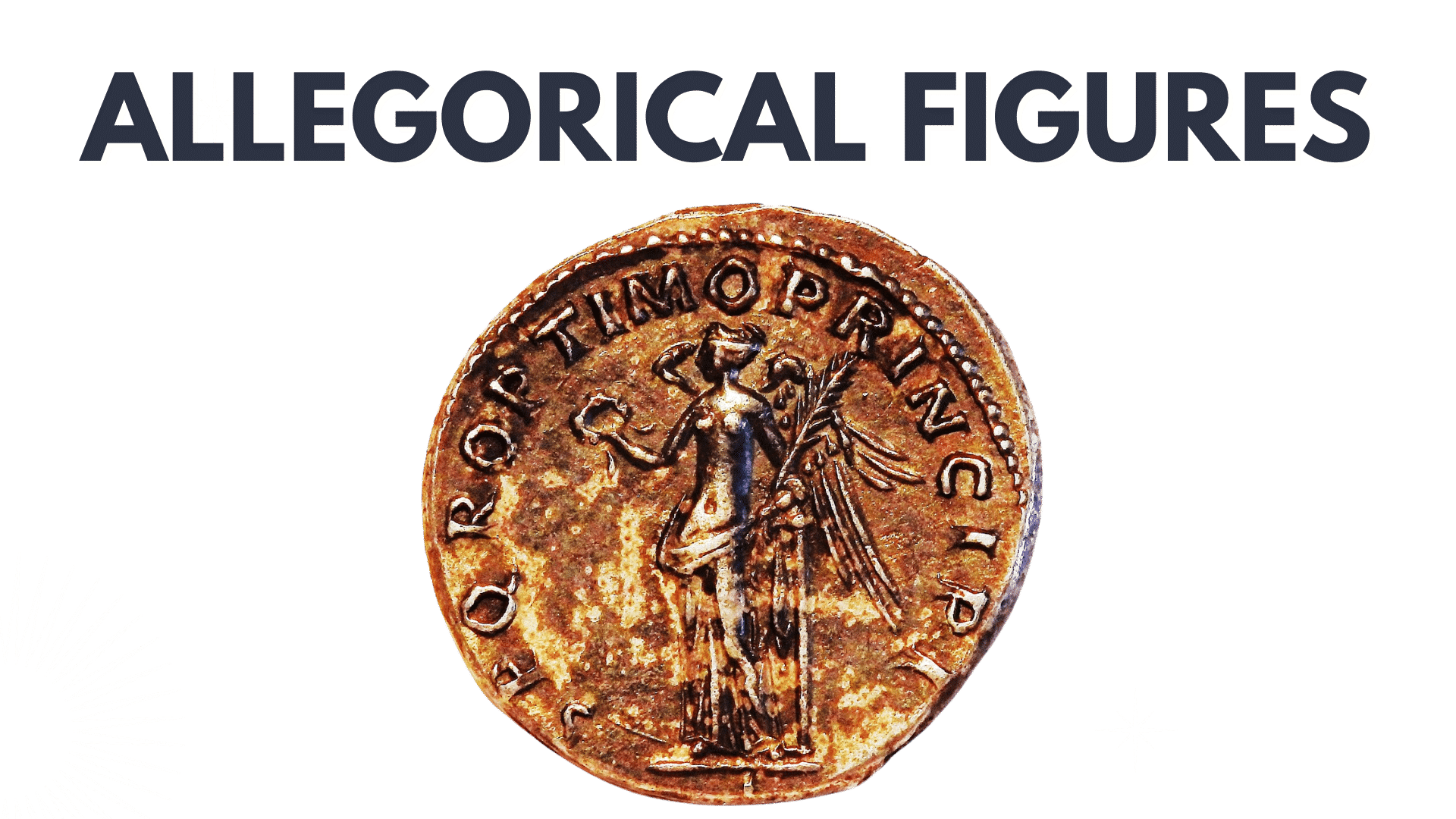
A Victory coin minted after a major conquest, embodying Rome’s divine right to rule.
This content is brought to you by The American Institute for Roman Culture, a 501(C)3 US Non-Profit Organization.
Please support our mission to aid learning and understanding of ancient Rome through free-to-access content by donating today.
Cite This Page
Cite this page as: Darius Arya, The American Institute for Roman Culture, “Roman Coins – Prosperity, Politics & Propaganda” Ancient Rome Live. Last modified 22/01/2025. https://ancientromelive.org/roman-coins-prosperity-politics-propaganda/
License
Created by The American Institute of Roman Culture, published on 22/01/2025 under the following license: Creative Commons: Attribution-NonCommercial-ShareAlike. This license lets others remix, tweak, and build upon this content non-commercially, as long as they credit the author and license their new creations under the identical terms. Please note that content linked from this page may have different licensing terms.

